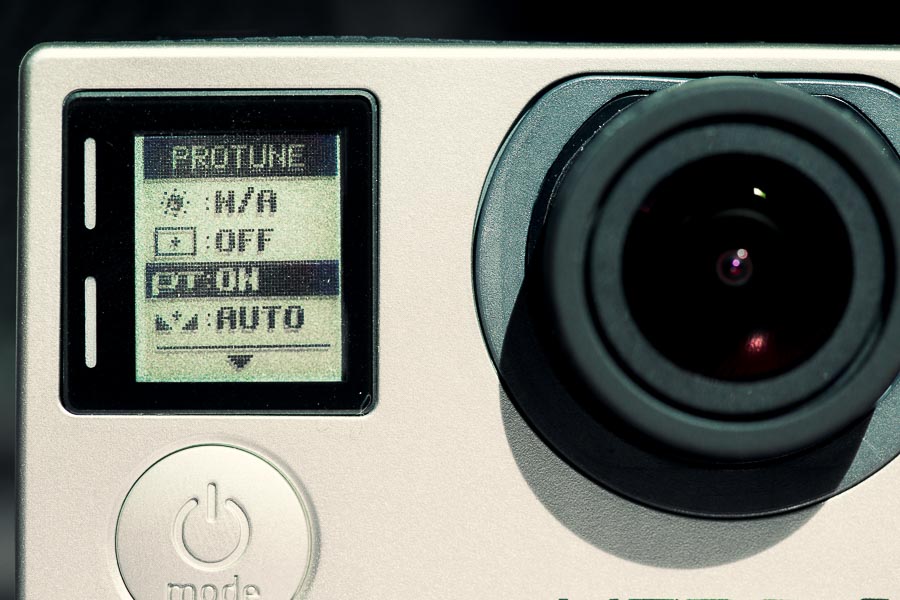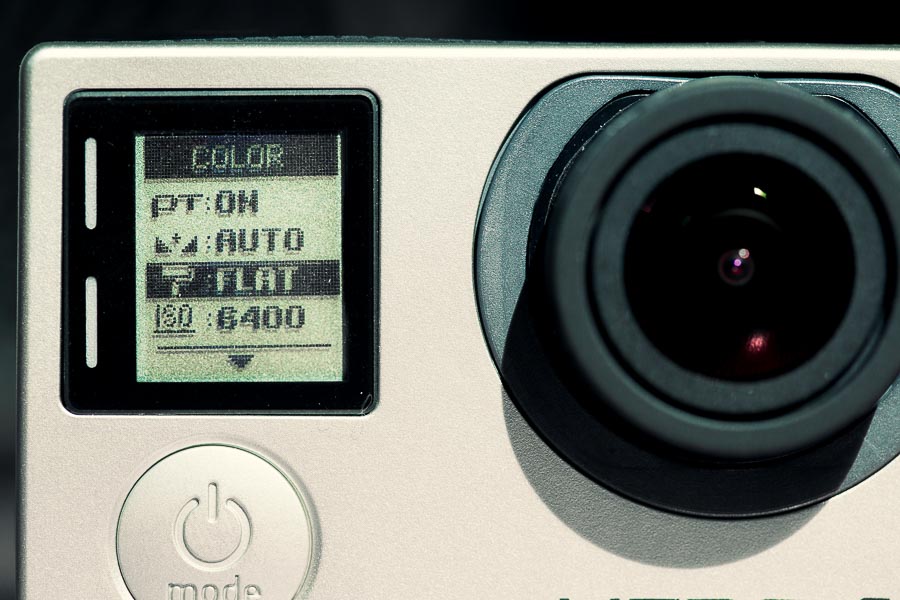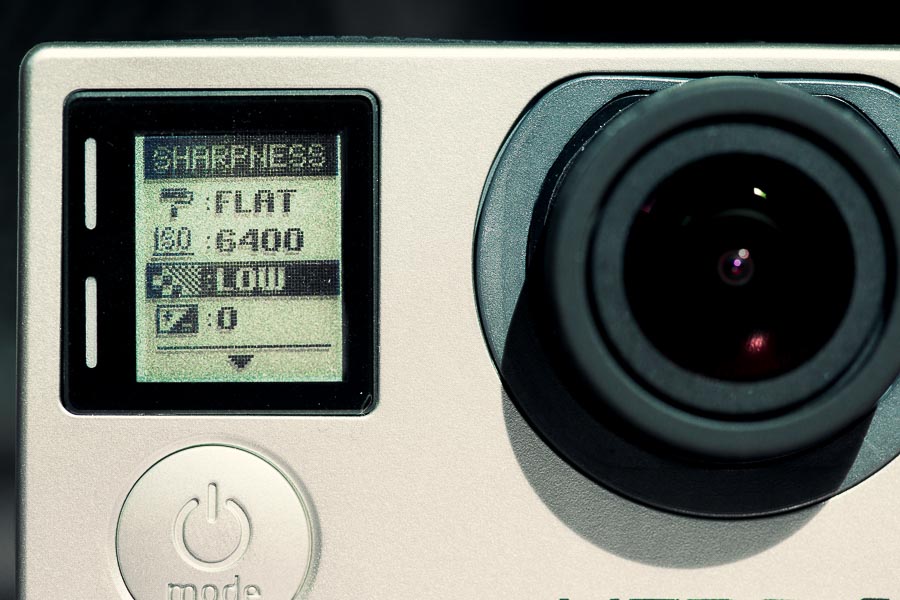GoPro has announced their latest action camera, the HERO4, in both Black and Silver editions, along with the Hero, an entry-level GoPro. The kind folks at GoPro invited me to try out these cameras last week, in an activity-filled day in San Francisco.
A Camera and a Culture
At the HERO3 launch event two years ago, I was struck by how different my reaction was from other camera announcements:
Or, to put it another way, while other cameras make me want to go out and shoot something interesting, a new GoPro makes me want to go out and do something interesting.
GoPro CEO and founder Nick Woodman is passionate about sharing the moments in life that matter most. With the eloquence of Ferris Bueller, he'll tell you that life is short, that moments flit by, gone before you know it. A camera that you don't need to fuss with, strapped to your head or clamped to your toddler's tricycle, can certainly capture and preserve that moment—but, more importantly, it allows you to share it. And that's what makes these moments more meaningful to us.
When he talks about this stuff, you believe it, because he does.
Other camera makers may compete viciously on specs and features, but they can't touch GoPro's culture. The world is full of camera companies trying to build something useful for an adventure. Spend a day with the GoPro team and you'll have no doubt that they are truly an adventure company that also makes cameras.
Small Big Changes
The HERO4 looks a lot like the HERO3+ (with its flat lens covering on the waterproof enclosure), but there are some changes. The battery is new, and inserts much more easily now into the bottom of the camera body rather than the back. The WiFi button on the side is now also a Settings button, making basic menu operations easier. The menus have been reorganized, for the better, as have the indicator lights on the body.
The HERO4 uses the same 12-megapixel sensor as the HERO3+. All the increased resolution and frame rate performance is due to a 2x increase in processor power.
Again With the 4K
The HERO4 Black alone shoots 4K (UHD) video at up to 29.97 fps. Do you need this? Probably not, but it's nice to have. I shot some 4K 23.976 video of my son riding his scooter (using the awesome Jaws Flex Clamp Mount). Play it full-screen and you'll notice that the background is quite sharp. But the subject—my kid—with his face a foot or so from the lens, is slightly out of focus. The GoPro lens has a fixed focus distance of infinity (from what I can tell), and generally-speaking this works fine. Throw lots of light at it and keep things at arm's length, and GoPro footage can look amazingly sharp. But at 4K, you'll see what's truly sharp and what's not.
Still, for situations with tons of light, and where the vertical reframing that comes with 4:3 (4K is 16:9 only) isn't necessary, I might use this mode, because why not? 4K's real advantage at capture time is in helping to provide a clean HD master, and so far that seems to be true of the HERO4 as well.
More likely, however, is that I'd opt for the 2.7K 4:3 option, which would seem to be an ideal setting—except, for some reason, it is only available at 29.97 fps, not 23.976.
Slow Motion For Me
The HERO4 can shoot 1080p HD up to 120 fps. So that's cool.
Across the board, those familiar with the HERO3+ series will see that the HERO4 is basically the same camera with more of everything in the resolution vs. frame rate matrix. This is a great example of a camera obeying Maschwitz's Law, i.e. giving us everything it's got.
Silverback
The 4K UHD option is unique to the HERO4 Black. The Silver, which retails for $100 less, eliminates this feature (and some of the higher frame rates), but ads a touch LCD screen to the back.
There's already been much angst over this bifurcation of the two models, but it makes sense to me. If you're a "serious" GoPro shooter, you don't want an LCD screen burning up your battery and adding heat. You're more likely to use the built-in WiFi (hear that Canon? This tiny camera has built-in WiFi, Bluetooth, and shoots 4K, for $500.), or maybe the LCD BacPac, to check your frame before sealing up your dozen GoPros in their waterproof enclosures and bombing a muddy track on your customized mountain bike.
The HERO4 Silver is a great GoPro, especially for stills. For many people, it will be the perfect choice.
Don't Forget Stills
A whale shark, like a chicken-fried steak, is the second thing in its name, not the first.
It's insanely fun to shoot stills with a GoPro. Or rather, the only time it's worth taking stills with your GoPro is when you're having insane fun. Bring it with you in the pool, or in the ocean, or on a roller coaster. And by all means, if you go snorkeling with a whale shark in Baja, bring your GoPro—as I was lucky enough to do within weeks of getting my HERO3 in 2012.
Night Swimming
One of the cool new features of the HERO4 is "Night Lapse," a time-lapse mode optimized for night shooting. This is super fun, super easy, and a great fit for a camera that's weatherproofed out of the box and so easily and mountable anywhere. I clamped it to the railing in my backyard almost as an afterthought, and captured a swirling lesson on the Bay Area's microclimates.
Capture Overkill
Another thing I like about GoPro's culture is that they encourage a capture-a-lot, edit-a-lot mentality. This necessitates post-production, which they encourage with their free GoPro Studio software.
What do I mean by capture-a-lot, edit-a-lot? More than just the obvious. Sure, if you clamp a GoPro to your surfboard and record all morning, you'll have a ton of footage to comb through (something the HERO4 makes much easier by allowing you to tag "HiLite" moments in your footage by pressing the Settings button while recording—a very smart feature), but it also means capturing in a generous, lenient format, and then using post production to extract the best results.
The folks at GoPro who shoot and edit these amazing launch videos usually shoot at a higher resolution and frame rate than they deliver. Often the resolution of choice is 1440 x 1080, a full-sensor readout from which you can extract a clean 1080p crop. The ability to vertically reframe within the native 4:3 image routinely saves their butts on those unattended helmet cams, where framing up a shot (even with an LCD or iPhone app preview) requires experience, guesswork, and a bit of luck. It certainly saved me on Run Like Hell—where I added numerous vertical reframing animations to keep the composition feeling right.
They also often shoot at high frame rates, freely using footage at both 100% speed and also slowed down to 1:1 or beyond. To facilitate this for all GoPro users, not just those with access to Kronos and Twixter, Studio now has optical flow slow motion built right in.
Lastly, they use ProTune, which is their flat picture profile. I recommend this mode of course, with the additional tweaks of setting Color Space to Flat (instead of the default of "GoPro"), and Sharpness to Low (the lowest setting) instead of the default of High.
That's Prolost Flat for GoPro. And note that, in the HERO4, these settings can also be applied to stills. This requires a separate trip into the settings menu, as each shooting mode now remembers its own settings.
Road Rash, But no Faceplants
What's not to like about the HERO4? Not being a “journalist,” it’s hard to complain about a camera I’ve been given for free. So here's me trying:
- The menus, while greatly improved over previous versions, are still clunky to navigate.
- If you're only an occasional GoPro user, it's easy to get bit by getting a setting just slightly wrong. On that tiny screen, you may well miss a small detail that can render your footage significantly less awesome. For example, I took some advice and set my minimum ISO to 400 for one of our activities. But there wasn't enough light for ISO 400 and 60 fps, so my HERO4 Black had no option but to slow its shutter to 1/30, meaning I didn't get 60 fps at all, I got 30 smeary frames per second in a 60 fps stream. I won't make that mistake again, I hope, but there is a learning curve here.
- The choices of aspect ratio, resolution, and frame rate, and how they all interact, can be confusing. And the default setting is a new mode that I don't like at all, yet still managed to accidentally use a few times. It's called "Superview," and it uses a full-sensor capture which is then stretched to fill a 16:9 frame. The stretch is biased more toward the edges, like a terrible setting on a terrible HD TV (or a crappy HD upconverted movie on cable). GoPro sees this mode as a way to get maximum coverage and fill modern TVs with no fuss in post, but if there was a button to wipe this setting from my GoPros, I'd press it. Instead, it's the default, which means we'll see a lot of it. The Aspect Ratio Police are going to be busy.
- As I mentioned, the the 2.7K 4:3 option is inexplicably limited to 29.97 fps. Maybe a firmware update could fix this.
- The image quality is about what you'd expect. There's compression artifacting, and noise, and everything you're accustomed to from GoPros past. These are the kinds of problems that drive me crazy in my own GoPro footage, yet never seem to bother me in other people's. That’s because, to get back to my initial observation, the GoPro is the ultimate content-is-king camera. If what you’re shooting isn’t interesting enough to power through some macroblocking, you’re using the wrong camera.
That’s it. That’s the worst I can say about the GoPro HERO4. In the past, one might have been able to find an angle from which to balk at the price of a GoPro, but the entry-level Hero, at $129.99 USD, eliminates that complaint.
GoPro Cinema
A GoPro has its own look. It’s a difficult camera to evaluate in the context of “cameras,” because it speaks it’s own language so strongly. If you try to intercut it with other footage, you can expect many non-camera people in your audience to recognize “a GoPro shot” when they see it. In a historical epic, this would be a risky move. In a Jeep commercial, it could be as natural as lens flares and sky gradients.
The GoPro look is not mandatory though. At some resolutions, you can opt for a cropped field of view, for a less crazy-wide image. And the fisheye distortion is actually quite easy to dial back in post, using either the Lens Distortion effect in Premiere Pro, the Optics Compensation effect in After Effects, or the Lens Distortion tool in Magic Bullet Looks.
The last time I used a GoPro for filmmaking, I embraced the signature look. When an audience sees that telltale barrel distortion and poppy palette, they know they’re about to see something really cool, that really happened. I used this to my advantage as I gradually escalated the mayhem in Run Like Hell well past reality and into pure science fiction.
I love having the GoPro in my arsenal, even if I don’t use it as often as my other cameras.
Go Amateur
The GoPro Studio software comes with template projects, pre-populated with professional footage, over which you can drop your own shots for a shortcut to a ready-made video. One of the samples stands out, because instead of Olympic snowboarders or bikini-clad surfers, it’s nothing more than GoPro CEO Nick Woodman playing in a pool with his kids. There’s one shot in that template—just a simple moment of his boy jumping into the water—that is so infectiously ebullient that I literally gasped when I saw it. I realized in that moment that maybe I shouldn’t evaluate the GoPro as a filmmaker, or a camera nut—but as a dad, with a kid who seems to grow at light speed. I’m so grateful that Nick captured this simple, joyful moment, and that he shared it with us all. If you never see another GoPro shot in one of my films again, don’t think for second that I’m not using these delightful little cameras. If I’m doing things right, I might just be using them more for life than for work.
Baja pool family selfie with GoPro HERO3
The GoPro HERO4 Black ($499.99 USD), HERO4 Silver ($399.99), and Hero ($129.99) start selling on October 5. My favorite GoPro accessories are the Jaws Flex Clamp Mount and the hilariously named 3-Way. Don't forget a MicroSDXC card too.






